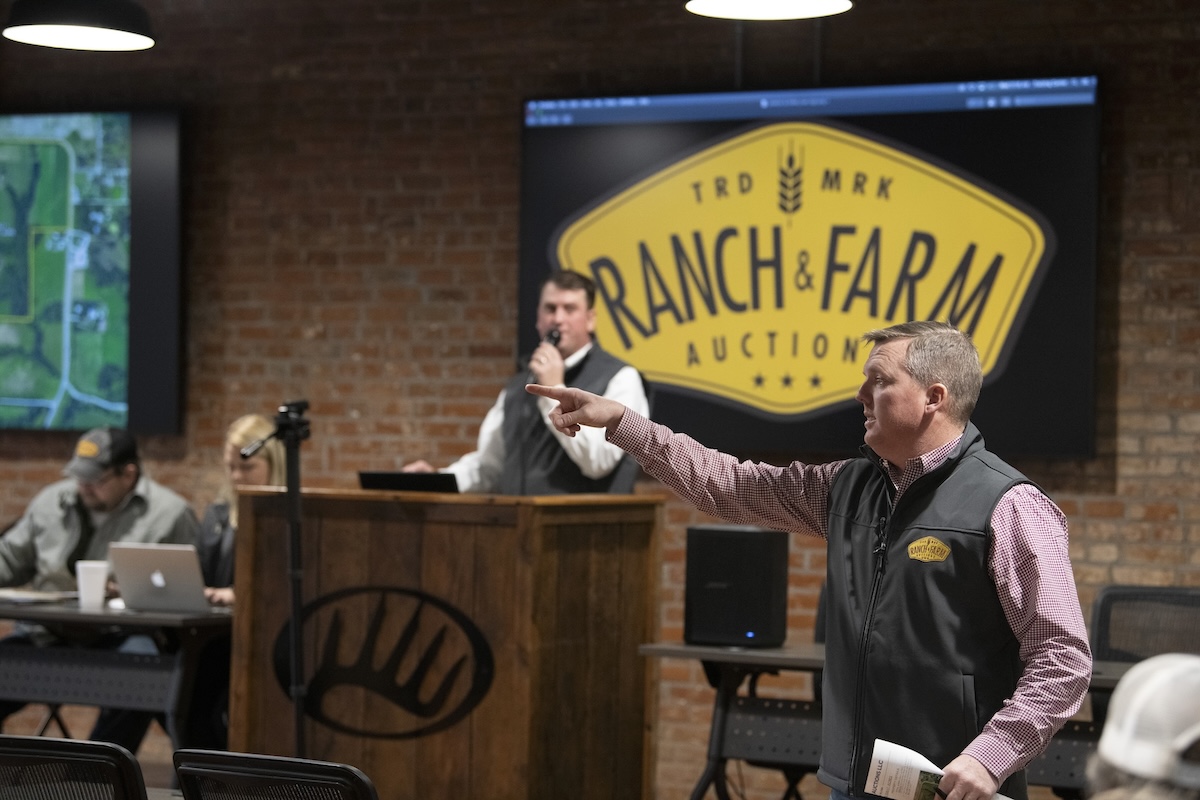
A Guide to Participating in Farm Auctions
How do land auctions work? How do you sell land at auction? How to buy land at auction? These questions and more run through the minds of first-time farm auction attendees. Of course, being in the real estate world, farm auctions are multi-faceted, and in many ways, quite nuanced.
Oftentimes, land auctioned off is held by banks, government entities, and private individuals. Of course, those who hope to secure a piece of land, or even a farm, might do so by attending a farm auction. For those new to the process, here is a beginner’s guide to participating in farm auctions.
Editor’s Note: This is not financial, investment, legal, or real estate advice. Consult with a financial planner, investment specialist, real estate lawyer, and real estate professional before buying or selling land at auction.

Live In-Person vs. Online vs. Hybrid Land Auctions
There are several types of auction settings. Each one offers its own experience and opportunities. That said, live in-person, online, and hybrid land auctions are the three types bidders and sellers alike will encounter.
Live In-Person Land Auctions: A live, in-person land auction is the traditional method. This type is what most people envision and expect. It's the customary live setting where the auctioneer and bidders interact face to face and often yields the most competitive bidding results.
Online Land Auctions: Online land auctions are gaining popularity. It's where land is sold only online. There is no in-person land auction. Instead, the property has a start and end time, and bidding takes place in-between these timestamps.
Hybrid Land Auctions: Perhaps the most commonly used auction type today is the hybrid land auction. This is where the property goes to auction live in-person and online simultaneously. Therefore, in-person and online bidders all compete against each other at the same time.
The type of auction dictates general procedures and expectations. That said, whether in-person or online, absolute or reserved, or the auction method used, each can be very effective for sellers and bidders alike. Furthermore, in most cases, each of the above scenarios are met with strategic advertising campaigns so that bidders are made aware of the opportunity.

Absolute Auctions vs Reserved Auctions
Auction settings aside, there are two types of auctions. These include absolute and reserved. Absolute auctions are more attractive to bidders, but reserved auctions establish safeguards and retain liberties for the seller. All said, if not declared as an absolute auction, it's to be assumed it will be an auction with reserve.
Absolute Auctions: An absolute auction is an auction where the seller is required to accept the highest bid, and the sale must be accepted, no matter if the high bid meets expectations, or not. (They can cancel the auction up until bidding starts.) Furthermore, sellers are not permitted to bid on tracts sold at an absolute auction. For these reasons, absolute auctions are advertised as such because these are more advantageous for, and therefore more attractive to, buyers. As expected, absolute auctions are rarer than reserved auctions.
Reserved Auctions: A reserved auction is the default method, and most common, type of farm auction. Generally, the seller establishes a threshold the auction sum must meet in order for the sale to go through. In short, they can reject the auction outcome if it does not meet an acceptable minimum. Additionally, this auction type allows sellers to bid against other buyers. Plus, if the seller chooses, they can pull a tract (or tracts) from being sold.
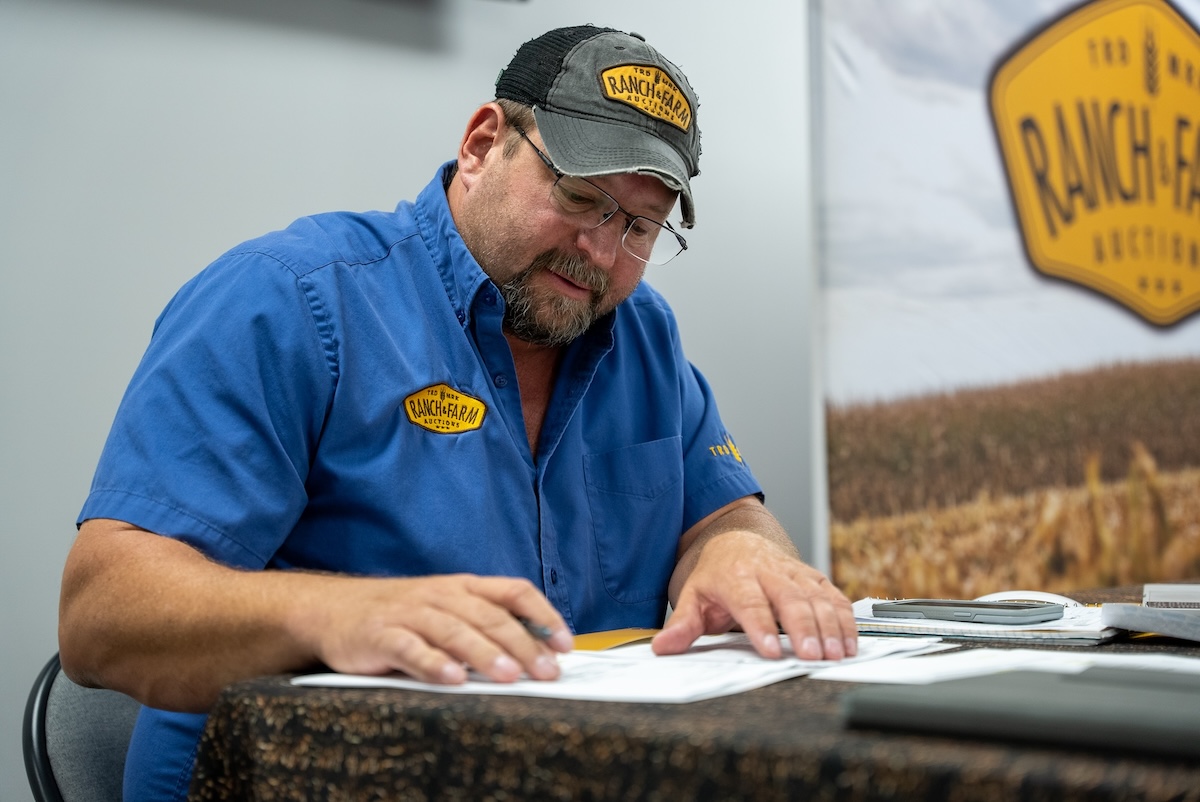
Understand Differences in Auction Styles for Selling Tracts
There are two primary methods auctioneers use to sell land. The first is where the auctioneer sells tracts individually. The bidding takes place for each individual tract, starting with tract No. 1, up until the last tract is sold. Bidders interested in the tract bid on it, and those who aren't, don't bid. Each tract starts a new round of bidding. The highest bidder for each tract wins.
Buyer's choice is another method. This allows bidders to bid on the right to choose which tract(s) they want. Whatever their winning bid is, that's that price they select each tract. They can take all tracts they want at that price, or they can wait and bid again in hopes of securing a lower price. That said, it's possible they might pay even more than from a previous round. Of course, contiguous rounds of bidding take place until all tracts are sold.
Recombines are part of some auctions, but aren't as common as these once were. When implemented, this is disclosed before bidding begins. Once one of the two above types of bidding concludes, some auctions offer the tracts in combinations, and/or the entire property as a whole. In some instances, anyone willing to give 5-10% more than the sum of the individual tract sales can walk away with all of it. However, some auctioneers set that threshold at 5% or 10% more than the sum of the individual tract sales from earlier rounds. This protects individual tract winning bidders who participated in earlier rounds.

Finding the Auction Venue
Auction companies deploy strategic means of getting the word out. They create awareness and generate hype to boost auction attendance. Of course, bidders interested in available tracts at auction can contact the auctioneering company with questions, including venue location.. In some instances, you might even be able to walk the land before the day of the sale.
Now, it's the day of the auction, and if you haven't already, it's time to find the auction venue. This might be one of numerous places. Certainly, don't assume it's hosted at the property being sold.
The traditional farm auction format is holding the auction on site. Meaning, the auction takes place on the very dirt that's selling. However, a newer option includes hosting the auction at a different location that offers more comfort and convenience. Common locations include community centers, conference rooms, fire stations, town halls, etc. Oftentimes, the auction site is relatively close to the property being sold, but might be a short distance away.
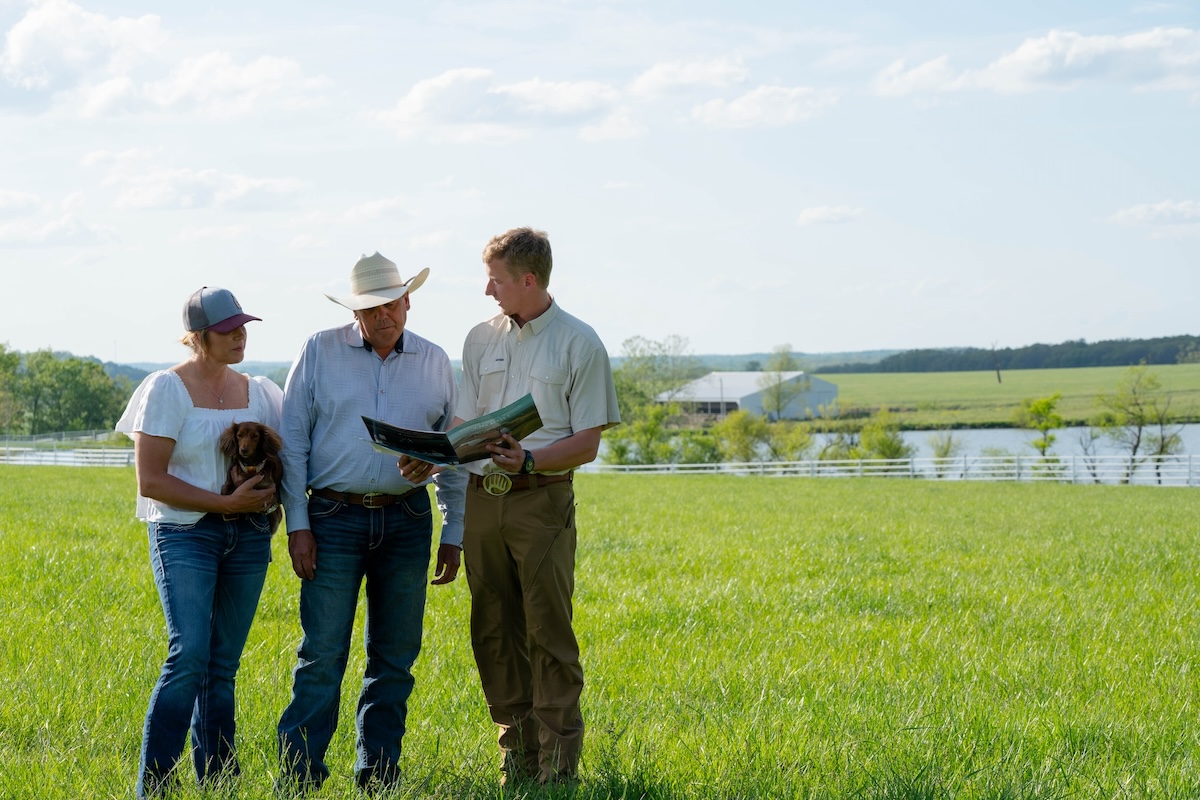
Registering as a Bidder
Once on site, locate the auctioneer's registration booth. Every company conducts registration differently. That said, whether providing information before receiving a bidder number, or after making a winning bid, expect to provide certain personal information. It also might include providing proof of capital, or if financing, a pre-approval letter. If financing the property, always arrive at the auction with pre-approval paperwork. If you have a trusted agent or land specialist, they can register you to bid and even represent you as a bidder.
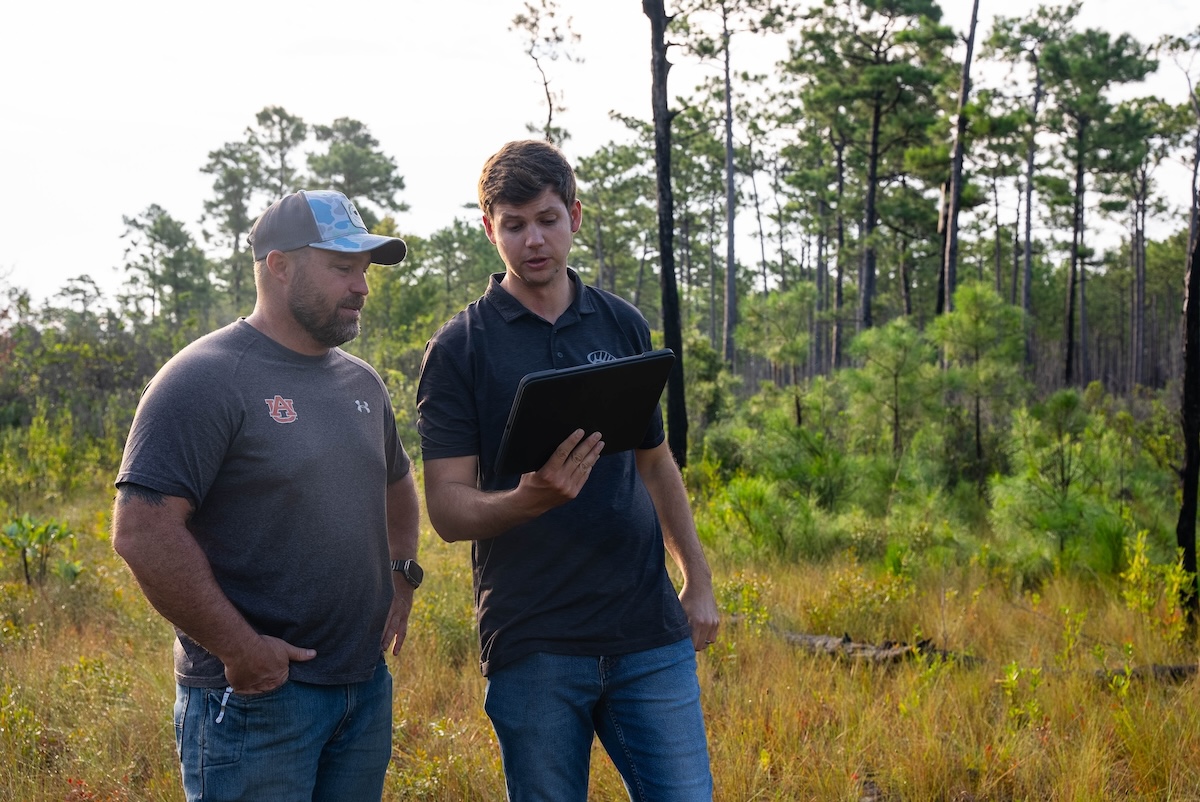
Studying the Auction Terms and Conditions
The terms and conditions set the rules, guidelines, and stipulations of a farm auction. This prevents individuals from bending rules or blurring lines. These can prevent poor, unethical behavior. However, it's more for clarifying the type and style of auction it will be. Plus, it outlines the available ethical manners in which the auction will be conducted (i.e.: absolute vs. reserved auction).
Examples of some things covered in the terms and conditions:
- Auctioneer details and representations
- General auction procedures
- Type of bidding available (in-person, online, etc.)
- Disclosure of existing easements, covenants, restrictions, zoning, etc.
- Notification of "as-is" purchasing
- Survey and boundary details
- Buyer's premium percentages
- How much to pay down the day of the sale
- Closing dates for those who purchase a tract (or tracts)
- Outline of property taxes due (and who pays them)
- Conveyance details
- And much more
Ultimately, the terms and conditions notify all auction attendees the rules in which the seller(s) and buyer(s) must abide. The auctioneer, and bidders, then proceed under these guidelines. Thus, everything is fully disclosed, everyone is treated fairly, and the auction (hopefully) concludes without issues.
Finally, it's important to know that, in virtually all scenarios, the auctioneer is representing the seller (not the bidder/buyer). This is referred to as single seller representation. While the auctioneer treats buyers and bidders fairly, they do not represent or advise bidders from a buying position.
Auction Rules and Regulations Vary by State
It's important to know that auction rules and regulations vary by state. There are uniform commercial codes for auction, but even so, each state regulates real estate differently. It's important to study state auction rules and laws. Then, learn universal auction etiquette and general expectations.
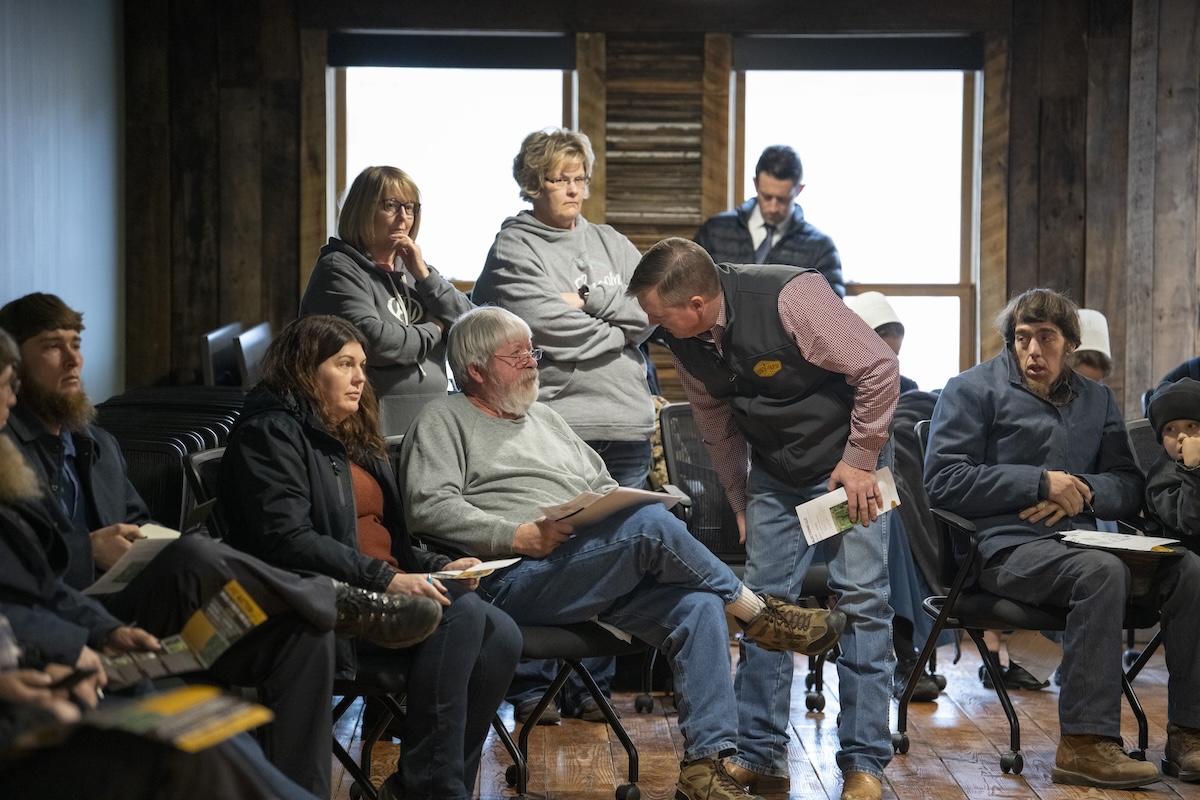
Your Bid Is Your Word
Auctions have start times, and when conducted solely online, end times as well. For live, in-person and hybrid auctions, end times are more flexible, and vary, based on the auction pace.
When the bidding begins, be mindful of your hands, arms, and eye contact with an auctioneer. A raise of the hand, nod of the head, or show of the bidder number can indicate a bid. So be mindful of body language and movements throughout the auction.
Of course, if you plan to bid, set a budget. Develop a bidding strategy. And express bidding discipline. In most bidding scenarios, bidders can retract their bid until the bidding completes. But you shouldn't put yourself in a position to exercise that.
Finally, if you win the bid, congratulations. But there's much to follow. It's important to understand the details of following through after bidding concludes. In most scenarios, it's best to hire a real estate professional, or real estate attorney, to assist with contract reviews and closing.
For landowners looking to sell at auction, contact Ranch & Farm. We can answer questions and help with your auctioneering needs.
Published on 2025-01-15